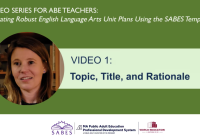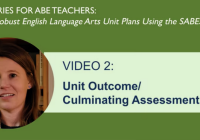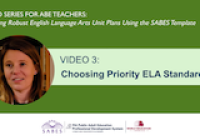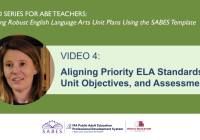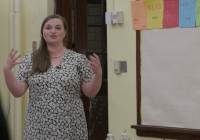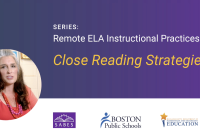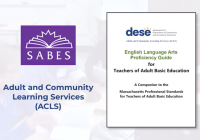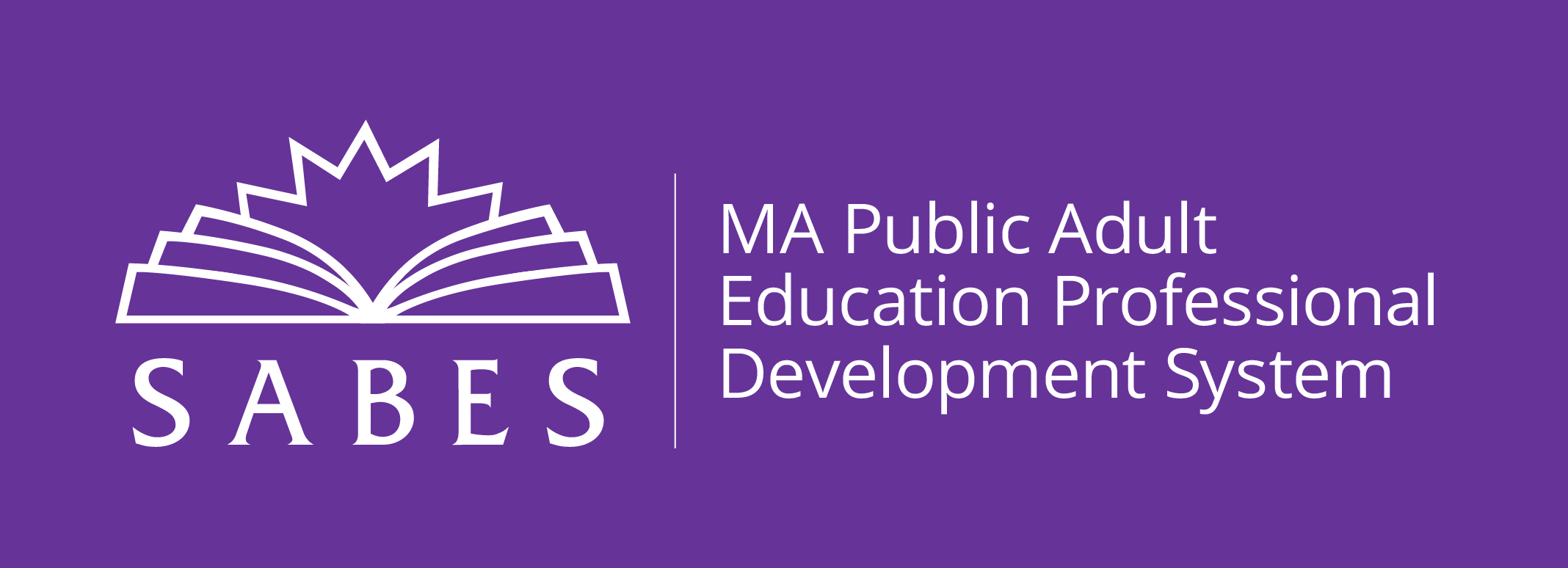This is the first of four videos in the series Creating Robust ELA Unit Plans Using the SABES Template. In VIDEO 1, you will learn how Lauren Twardy, an ABE teacher with Middlesex Community College
ELA: Videos
This is the second video in the series Creating Robust ELA Unit Plans Using the SABES Template . SABES recommends that you view the videos in numerical order to see how Lauren's conceptualization of
This is the third video in the series Creating Robust ELA Unit Plans Using the SABES Template . SABES recommends that you view the videos in numerical order to see how Lauren's conceptualization of
This is the fourth video in the series Creating Robust ELA Unit Plans Using the SABES Template . SABES recommends that you view the videos in numerical order to see how Lauren's conceptualization of
In this video, Stephanie Gaboury of the Blue Hills Adult Education Program teaches her intermediate-level ABE students (GLE 4-8.9) a new reading comprehension strategy to help them summarize a text by
In this highlights video, Stephanie Gaboury of the Blue Hills Adult Education Program teaches her intermediate-level ABE students (GLE 4-8.9) a new reading comprehension strategy to help them
In this video, Stephanie Gaboury of the Blue Hills Adult Education Program reflects on a lesson she taught her intermediate-level ABE students (GLE 4-8.9) on how to use a reading comprehension
Brooke Machado teaches a remote high school level Social Studies/ELA class on the rights and freedoms guaranteed by the First Amendment of the U.S. Constitution, using close reading strategies to
Watch and listen to how the teacher builds background knowledge, then models and scaffolds close reading using a complex, primary-source text—the First Amendment of the U.S. Constitution. Find
From ABE Professional Standards to the ELA Proficiency Guide View the video above to see how the ELA Proficiency Guide is connected to the Massachusetts ABE Professional Standards and why it is an

